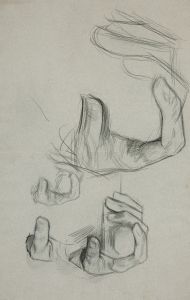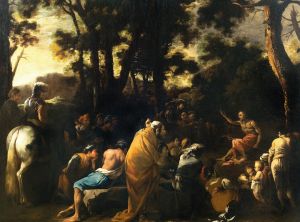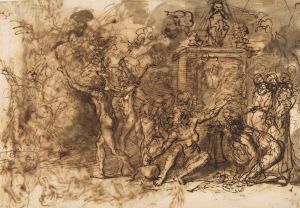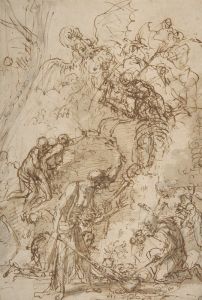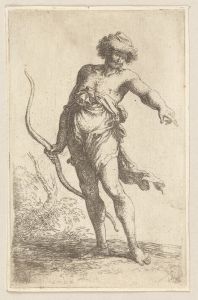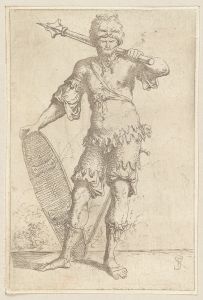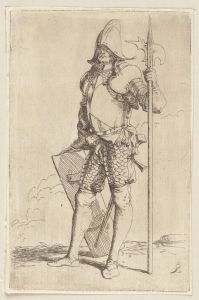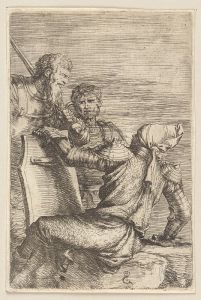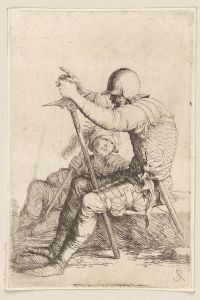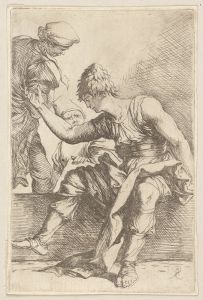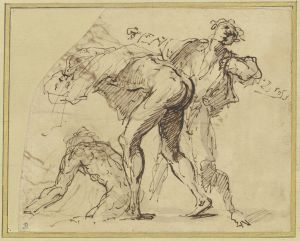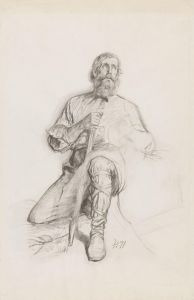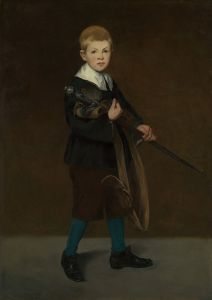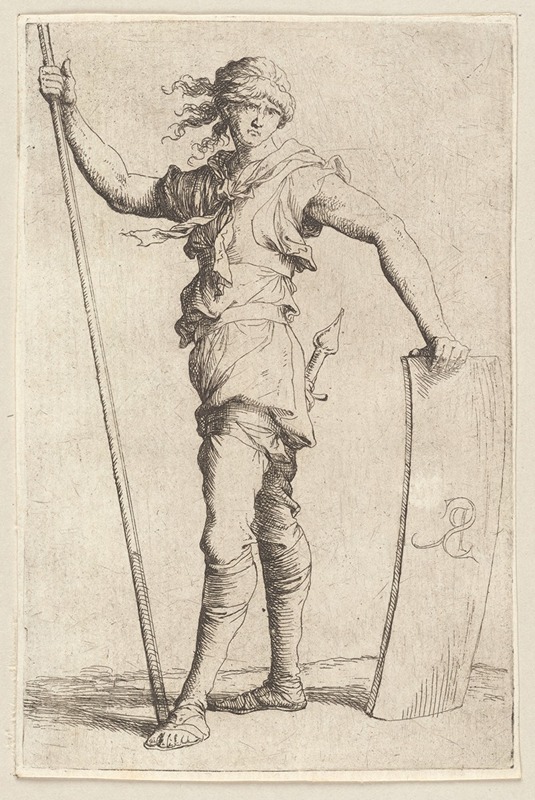
Soldier Holding a Cane and His Shield, Facing Left
A hand-painted replica of Salvator Rosa’s masterpiece Soldier Holding a Cane and His Shield, Facing Left, meticulously crafted by professional artists to capture the true essence of the original. Each piece is created with museum-quality canvas and rare mineral pigments, carefully painted by experienced artists with delicate brushstrokes and rich, layered colors to perfectly recreate the texture of the original artwork. Unlike machine-printed reproductions, this hand-painted version brings the painting to life, infused with the artist’s emotions and skill in every stroke. Whether for personal collection or home decoration, it instantly elevates the artistic atmosphere of any space.
Salvator Rosa was an Italian Baroque painter, poet, and printmaker, known for his unorthodox and often rebellious approach to art and life. Born in 1615 in Arenella, near Naples, Rosa became one of the most original artists of the 17th century. His works often depicted wild landscapes, historical scenes, and figures that conveyed a sense of drama and emotion. Rosa's art was characterized by its boldness and the artist's willingness to challenge the conventions of his time.
"Soldier Holding a Cane and His Shield, Facing Left" is one of Rosa's lesser-known works. While specific details about this particular piece are scarce, it is consistent with Rosa's interest in military subjects and figures. Rosa frequently explored themes of heroism, conflict, and the human condition through his depictions of soldiers and warriors. His soldiers were often portrayed with a sense of individuality and character, reflecting the artist's interest in the psychological aspects of his subjects.
The painting likely features a soldier, a common subject in Rosa's oeuvre, depicted with a cane and shield, facing left. This composition suggests a moment of contemplation or readiness, a theme Rosa often explored in his military portraits. The soldier's attire and equipment would have been rendered with Rosa's characteristic attention to detail, capturing the textures and materials with precision.
Rosa's use of chiaroscuro, the contrast between light and dark, would have been employed to enhance the dramatic effect of the scene. This technique was a hallmark of Baroque art, used to create a sense of depth and volume, and to draw the viewer's attention to the focal points of the composition. In "Soldier Holding a Cane and His Shield, Facing Left," the interplay of light and shadow would have contributed to the overall mood and intensity of the piece.
Salvator Rosa's works were often infused with a sense of movement and energy, reflecting his dynamic approach to composition. His figures, even when at rest, seemed to possess an inner vitality, a quality that set his work apart from many of his contemporaries. Rosa's soldiers, in particular, were depicted not just as warriors, but as individuals with their own stories and emotions.
While "Soldier Holding a Cane and His Shield, Facing Left" may not be as widely recognized as some of Rosa's other works, it nonetheless exemplifies the artist's skill in capturing the essence of his subjects. Rosa's ability to convey complex emotions and narratives through his art has ensured his lasting legacy in the history of Baroque painting.
Salvator Rosa's influence extended beyond his lifetime, inspiring future generations of artists who admired his bold style and willingness to defy artistic norms. His work remains a testament to the power of art to convey the complexities of the human experience, and "Soldier Holding a Cane and His Shield, Facing Left" is a part of this enduring legacy.





